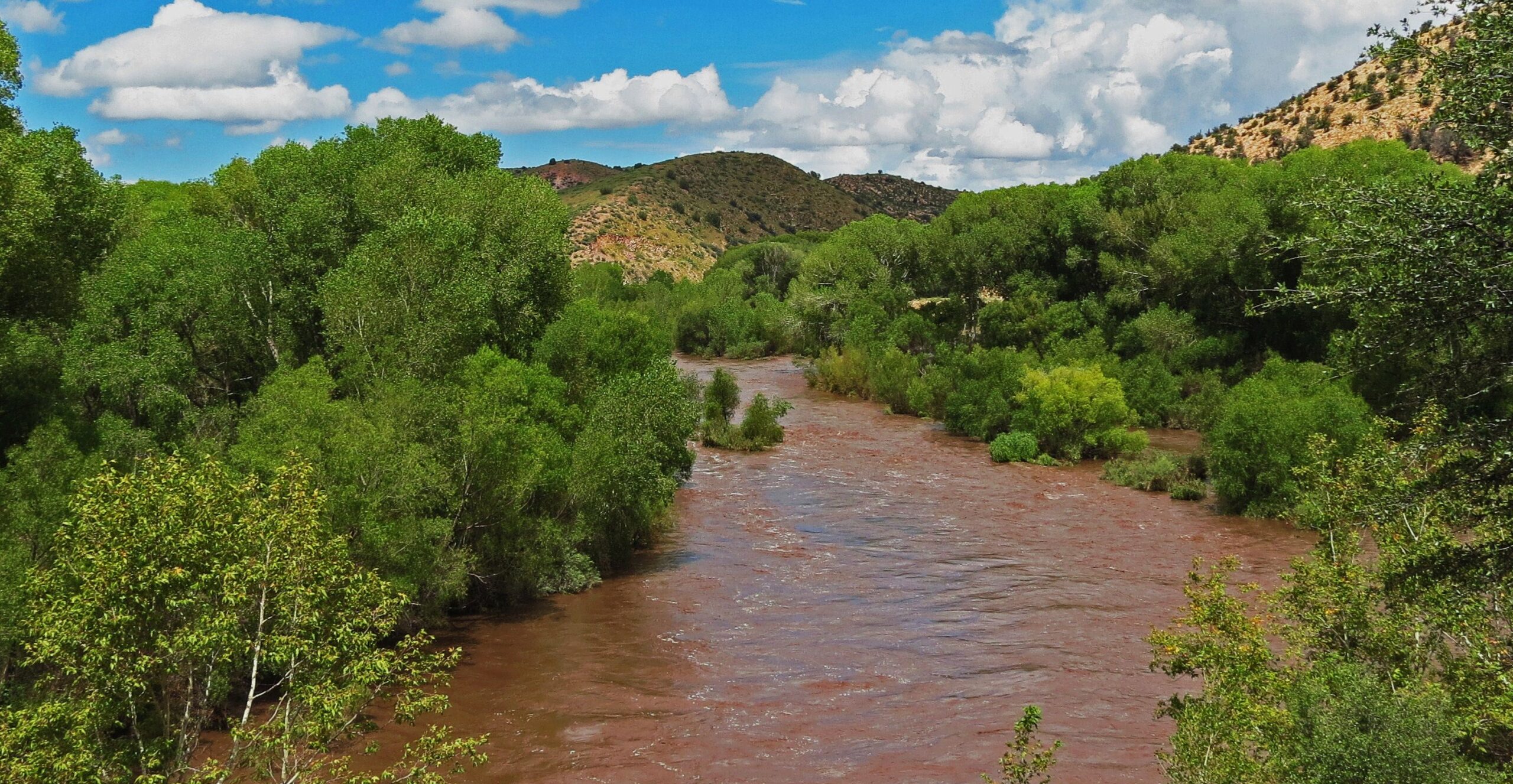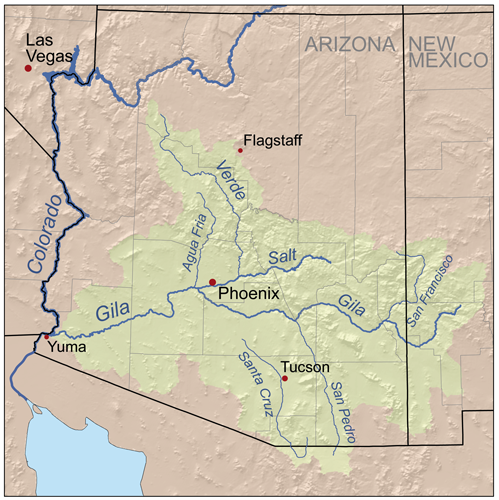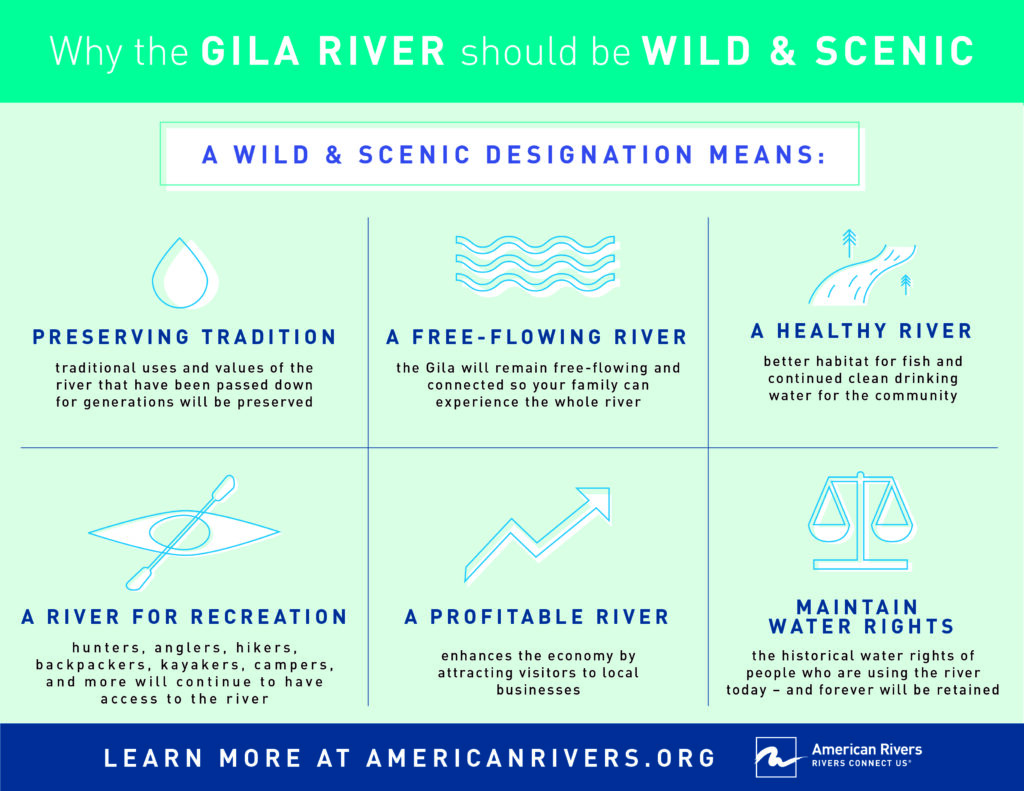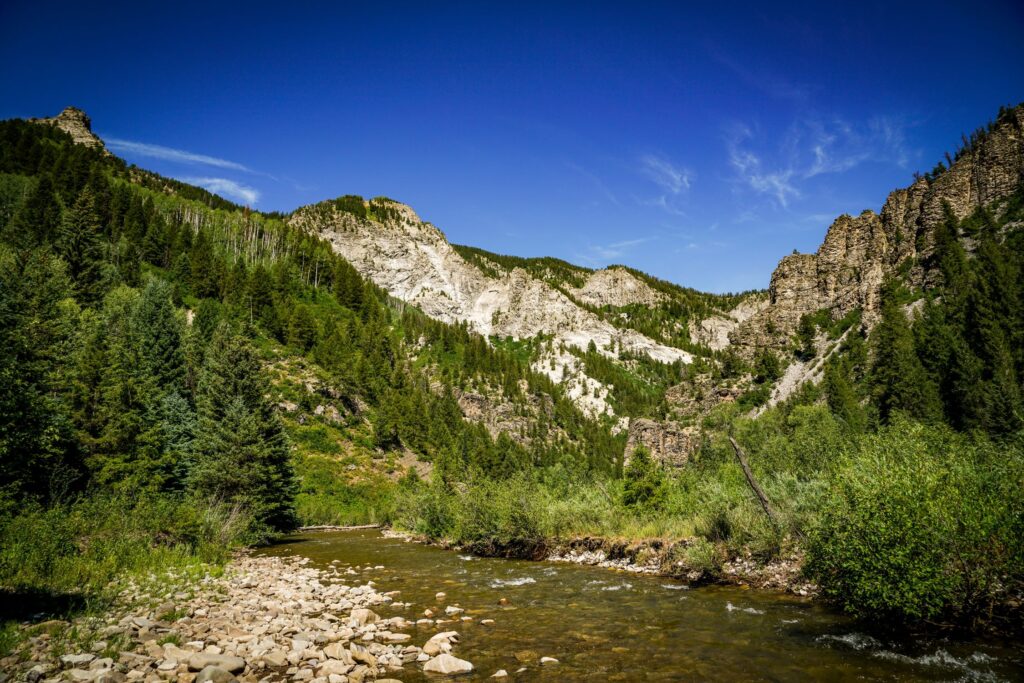Gila River
The Origin of Wilderness

The Gila River could be considered the birthplace of wilderness.
When Aldo Leopold convinced the US Forest Service that the headwaters of the Gila should be designated the world’s first primitive area back in 1924, it set the stage for the Wilderness Act of 1964. Deservingly, the Gila became the nation’s first congressionally designated Wilderness and remains the largest Wilderness Area in New Mexico.
The West Fork, Middle Fork, and much of the East Fork of the Gila River sit in the shadows of the Black Range along the Continental Divide and the rugged Mogollon Mountains looming at elevations upwards of 10,000 feet in the Gila Wilderness. Surrounded by a varied landscape that includes one of the world’s largest and healthiest Ponderosa Pine forests, the Gila headwaters help sustain abundant wildlife ranging from wild turkeys, eagles, and dusky grouse to deer, pronghorn, elk, bighorn sheep, javelina, cougars, and black bears. Several packs of reintroduced endangered Mexican wolves have established themselves in the Wilderness Area alongside the world’s largest population of rare Mexican spotted owls.
Renowned for its high quality bird habitat and populations of unusual species like the endangered Southwestern Willow Flycatcher, threatened Yellow-billed Cuckoo, Common Black-Hawk, Montezuma Quail, and Elf Owl, the upper Gila is a unique recreational attraction. The surrounding wilderness offers fishing for native trout, hunting, backpacking, horseback riding, and camping across hundreds of miles of trails. There’s generally a short boating season in the spring with the bonus of several natural hot springs to soak in along the river.
The Backstory
Few people realize that the Gila is one of the longest rivers in the West. That’s because it’s typically drained dry before getting halfway through its 500-mile voyage west to the Colorado River near Yuma, AZ. Once navigable by large riverboats from its mouth to Phoenix, the Gila below Phoenix today crosses the Gila River Indian Reservation as an intermittent trickle due to large irrigation diversions.
Thanks to the leadership of New Mexico Senators Martin Heinrich and Tom Udall, we have the opportunity to protect this amazing, historic watershed, permanently. In May 2020, the Senators introduced the M.H. Dutch Salmon Greater Gila Wild and Scenic Rivers Act, which would protect nearly 450 miles of the Gila and San Francisco Rivers and their tributaries under the Wild and Scenic Rivers Act, the premiere federal river protection legislation in the United States.
Why a Gila River Wild & Scenic designation?
Of the 108,014 miles of river in New Mexico, only 124 miles are permanently protected as Wild & Scenic.
The current Wild & Scenic proposal would protect more than 436 miles of the Gila and San Francisco Rivers, all on existing federal public lands.
The outdoor recreation industry employs about 99,000 New Mexicans and generates more than $623 million in state and local taxes annually. The Gila River is an important part of that contribution to the state’s economy.
A Wild and Scenic designation would protect access to the river for hunting, fishing, rafting, hiking, camping, and other forms of outdoor recreation, as well as existing and historic water rights.
ABOUT THE GILA RIVER
The Gila Wilderness, where the three forks of the Gila River converge, was the first federally designated Wilderness Area in the nation.
The Gila Wilderness is the largest in New Mexico, bordering Gila Cliff Dwellings National Monument and the Aldo Leopold Wilderness Area, named for the former Forest Service supervisor who fostered the idea of wilderness designation.
At nearly 60,000 square miles, the Gila River watershed covers more area than the entire Green River basin and four times as big as the drainage of Idaho’s Salmon River.
Between 1848 and 1853, the Gila River briefly marked the southern boundary of the United States.
What states does the river cross?
New Mexico


In order to be considered for Wild and Scenic designation, a river must exhibit some Outstandingly Remarkable Values, and the Gila certainly qualifies with a number of these ORV’s. It is definitely scenic, it has rich historic and cultural qualities. It features varied recreational opportunities, as well as a vibrant recreational economy that benefits many people across the region. Lastly, there are abundant fish and wildlife throughout the region, including rare and endangered species like the Gila trout, the Southwest Willow Flycatcher, and the northern Mexican garter snake.
Wild and Scenic River designation neither limits the public from accessing public lands nor opens private lands to public access. Designation does not change the existing water rights or irrigation systems. Fishing and hunting regulations will stay the same while the habitat that makes New Mexico’s outdoor traditions special will be protected.
A Wild and Scenic rivers designation for the Gila River is a great way to protect one of the Southwest’s most iconic and treasured rivers, as well as the vast agricultural and recreational economies that depend on it. It protects existing, traditional uses of the river, it permanently maintains historical water rights, and it preserves the healthy, free-flowing nature of one of New Mexico’s last remaining wild rivers.

Let's stay in touch!
We’re hard at work in the Southwest for rivers and clean water. Sign up to get the most important news affecting your water and rivers delivered right to your inbox.

